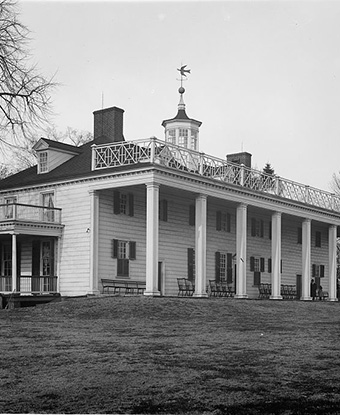Last updated: December 2, 2019
Person
Ann Pamela Cunningham

Library of Congress http://loc.gov/pictures/resource/npcc.31680/
Ann Pamela Cunningham helped save Mount Vernon, the estate of President George Washington. Her work inspired the historic preservation movement in the United States, and she remains an important figure in women’s history and disability history. She encouraged women around the United States to participate in preserving historical sites.
Cunningham was born on August 15, 1816 in South Carolina, and she was thrown from a horse as a teenager. Various stories differ on exactly how a young Ann Pamela Cunningham learned about Mount Vernon. One historical account describes how Ann’s mother saw Mount Vernon when she rode a boat down the Potomac River. When she returned home to South Carolina, Mrs. Cunningham told Ann about how George Washington’s estate had fallen into disrepair. [2] A young Cunningham became passionate about restoring the property although she lived at Rosemont, her family’s South Carolina plantation, for the rest of her life. [3] While we can’t be sure who exactly cared for Ann at Rosemont, her family had a history of enslaving African people. In 1850, the Cunningham’s Rosemont property housed over ninety enslaved people. [4] Despite her physical pain and her difficulty traveling, Ann Pamela Cunningham dedicated herself to saving George Washington’s estate.
She began her campaign by creating the Mount Vernon Ladies’ Association in 1853, a group that lobbied Congress to acquire Mount Vernon as a historical site. When government representatives refused to support the preservation project, the Association appointed women in thirty states to raise money to buy Mount Vernon from George Washington’s great-grandnephew, John Augustine Washington III. After convincing the President’s descendent that the property warranted historical attention, the Association made a downpayment on the now-iconic home.
As Cunningham and her colleagues continued raising money to restore Mount Vernon, she created a newsletter to inform contributors about their progress. This newsletter helped set the tone for historic preservation in the United States, establishing the field as a public engagement effort. When the Civil War forced Cunningham to return to South Carolina, she ensured that women would take her place at Mount Vernon. Under Cunningham’s direction, women were directly responsible for keeping up and maintaining the landmark.
After Cunningham died in 1875, her legacy continued. The Mount Vernon Ladies’ Association is among the oldest preservation organizations in the United States, as well as one of the first —if not the first— nationwide women’s organization. It continues to educate members of the public about George Washington’s home and life.
Works Referenced:
Arlisha R. Norwood, “Ann Pamela Cunningham,” National Women’s History Museum, 2017
Notes:
[1] The First Presbyterian Church, 1324 Marion Street, Columbia, SC was listed on the National Register of Historic Places on January 25, 1971. It has also been documented by the Historic American Buildings Survey
[2] Mount Vernon in Fairfax County, VA was listed on the National Register of Historic Places on October 15, 1966 and designated a National Historic Landmark on December 19, 1960. It has also been documented by the Historic American Buildings Survey.
[3] Rosemont Plantation in Laurens County, South Carolina, no longer stands. The site was added to the National Register of Historic Places on June 11, 1993.
[4] Michael Trinkley, Ph.D., records the Rosemont family history and the people that they enslaved. Trinkley, Michael (2008) Revisiting Rosemont Plantation, Laurens County, South Carolina. Chicora Foundation (opens a .pdf).
